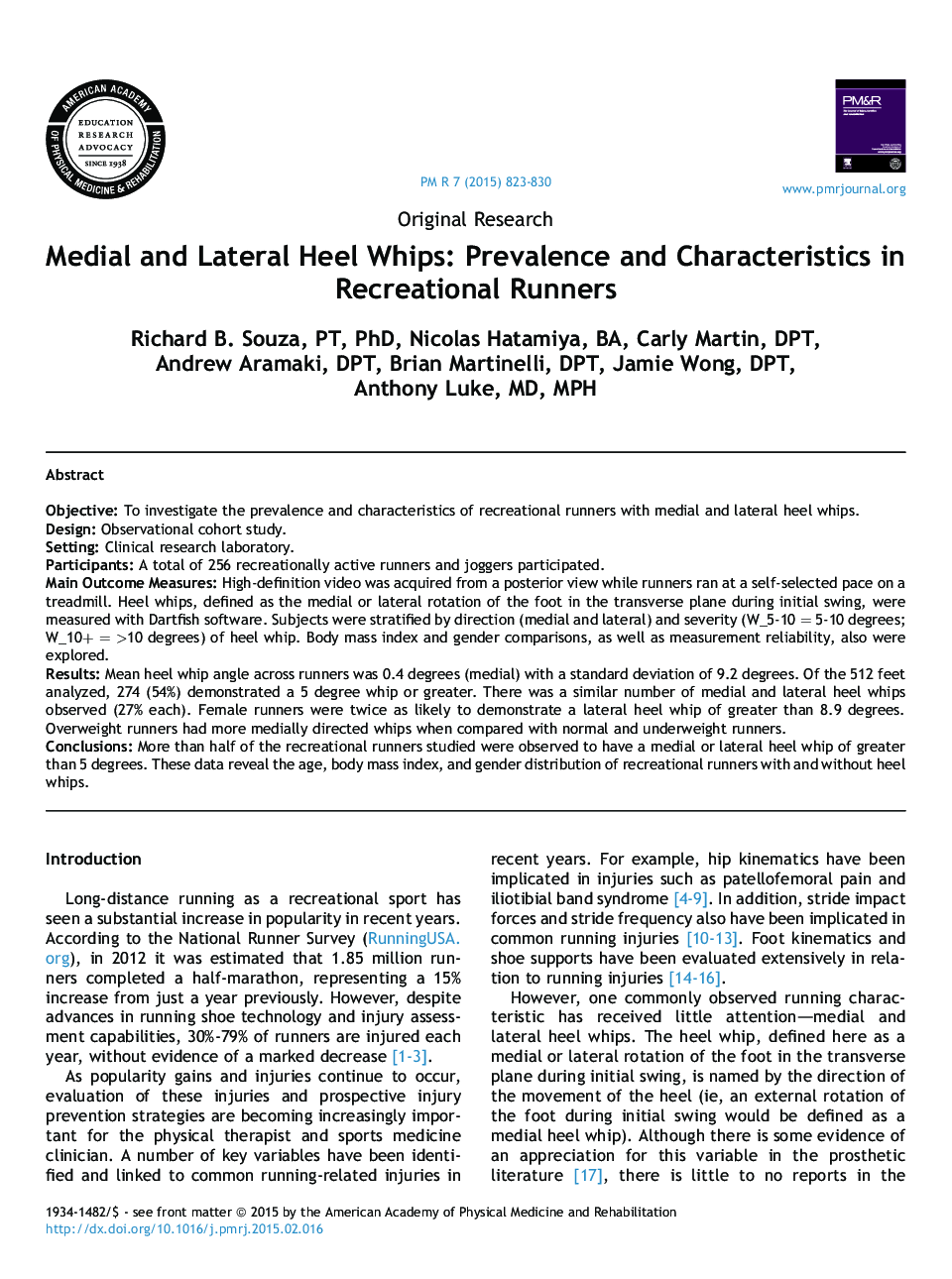| Article ID | Journal | Published Year | Pages | File Type |
|---|---|---|---|---|
| 2706954 | PM&R | 2015 | 8 Pages |
ObjectiveTo investigate the prevalence and characteristics of recreational runners with medial and lateral heel whips.DesignObservational cohort study.SettingClinical research laboratory.ParticipantsA total of 256 recreationally active runners and joggers participated.Main Outcome MeasuresHigh-definition video was acquired from a posterior view while runners ran at a self-selected pace on a treadmill. Heel whips, defined as the medial or lateral rotation of the foot in the transverse plane during initial swing, were measured with Dartfish software. Subjects were stratified by direction (medial and lateral) and severity (W_5-10 = 5-10 degrees; W_10+ = >10 degrees) of heel whip. Body mass index and gender comparisons, as well as measurement reliability, also were explored.ResultsMean heel whip angle across runners was 0.4 degrees (medial) with a standard deviation of 9.2 degrees. Of the 512 feet analyzed, 274 (54%) demonstrated a 5 degree whip or greater. There was a similar number of medial and lateral heel whips observed (27% each). Female runners were twice as likely to demonstrate a lateral heel whip of greater than 8.9 degrees. Overweight runners had more medially directed whips when compared with normal and underweight runners.ConclusionsMore than half of the recreational runners studied were observed to have a medial or lateral heel whip of greater than 5 degrees. These data reveal the age, body mass index, and gender distribution of recreational runners with and without heel whips.
